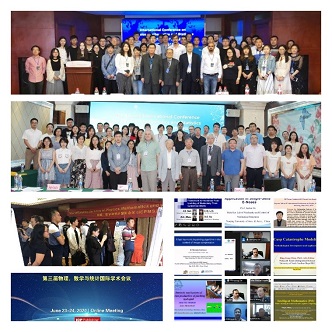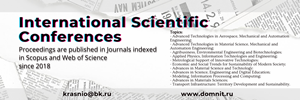Keynote Speaker
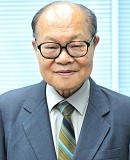
Prof Lixing Zhou
Department of Engineering Mechanics, Tsinghua University, China
Speech Title: Advances in Validation of the Second-Order Moment Combustion Model by Direct Numerical Simulation
Abstract:
Advances in Validation of the Second-Order Moment Combustion Model by Direct Numerical Simulation
Abstract: Turbulent combustion models are important in CFD simulation of practical facilities and have been studied for many years. Present models either are lack of generality or computationally too expensive. An economical and reasonable model for engineering application remains to be studied. A statistical moment model, i.e., second-order moment (SOM) combustion model was proposed by the present authors and has been applied to RANS modeling and LES of different flame types and flame structures and was validated by experimental results. To further theoretically validate the SOM model, the direct numerical simulation (DNS) was made by the present author and his colleagues. This lecture gives a review on validation of the SOM turbulent combustion model by DNS.
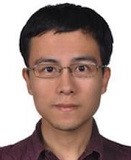
Prof Le FANG
Ecole Centrale Pekin, Beihang University, China
Speech Title: Turbulent flows with non-equilibrium dissipation law
Abstract:
Non-equilibrium turbulence indicates the flows with non-balanced transfer and dissipation locally. In recent years, the non-equilibrium turbulence has been validated in various experiments, showing a dissipation scaling of about Re^(-15/14). Presently there is still few explanations on the phenomena of non-equilibrium turbulence. We constructed several extreme non-equilibrium turbulence, and accordingly developed theoretical models for describing non-equilibrium turbulence. In short times with strong energy backscatter, we obtain a novel dissipation scaling of Re^(-2), and validate this scaling by using various numerical simulation results. We further applied these results of non-equilibrium turbulence in the flows in compressors. We show that the effect of non-equilibrium cannot be neglected, and then propose a quantitative description. Preliminary attempts of improving the turbulence models are introduced.
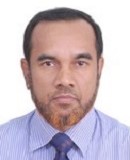
Md. Mahbub Alam
Professor
Harbin Institute of Technology, Shenzhen, China
Speech Title: Energy from flow-induced vibration
Abstract:
Renewable energy harvesting rapidly increases because of the recent research focus on the ocean and wind energy. The ocean occupies 70% of the earth’s surface, and water is 1000 times heavier than air. This abundance and high density of water make it superior for power generation capability over air. The ocean energy is present in two forms, i.e., waves in the vertical direction and currents in the horizontal direction. While the former is seasonal or dependent on weather, the latter is persistent. Energy can be harnessed continuously from horizontal currents by employing alternating lift force technologies. Fluid flow over structures (i.e., foils, circular, square, rectangular cylinders) produce alternating lift force due to complex fluid-structure interactions. The lift force generates vibration of the structure. Flow-induced vibration (FIV) involves different phenomena such as vortex-induced and galloping vibrations. The kinetic energy of a violently vibrating structure or structures can be converted into electricity, running a generator. This lecture will encompass energy harvesting from (ii) galloping vibrations of two circular cylinders of different diameters, casting light upon the mechanisms behind the galloping vibration and its sustainability, and (ii) free oscillation of an inverted foil.
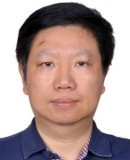
Rongming Wang
Professor
Beijing University of Science and Technology, China
Speech Title: Nucleation, growth, and structure evolution of nanocrystals and heterostructures
Abstract: Controllable synthesis of materials is the basis of material science. A deep understanding of the growth process on a certain characteristic scale is the cornerstone of controllable synthesis. In-situ observation of dynamic atomic migration, atomic arrangement, and electronic state evolution in the growth process of nanomaterials can provide direct experimental evidence for the study of growth mechanism and reveal the structure-activity relationship of nanomaterials, which greatly improves the research efficiency of new nanomaterials, and is becoming one of the most important frontiers in the field of material science research. An In-situ synthesis and characterization platform at atomic resolution was constructed based on the aberration-corrected environmental transmission electron microscope (ETEM), which can be used for the design, synthesis, and in-situ characterization of advanced functional materials at atomic spatial scale and millisecond time scale under the conditions of temperature field, electron beam irradiation and ambient atmosphere. The surface structure, interfacial atomic configuration and structural evolution of magnetic, optical and electrical functional materials were in situ studied by means of ETEM. The surface tensile strain of Ni-Pt nanoflowers was found using the column positioning technology with a picometer precision [1]. With the help of in-situ technique at atomic resolution, it is found that the epitaxial alignment and coalescence of Au nanoparticles on the surface of MoS2 can be accelerated by the irradiation of electron beam [2]. Combining digital dark field and spherical aberration correction technologies, we found that the coexistence of 2-3 nm sized TiO2 two-dimensional nanocrystals and amorphous TiO2, and the formation of ultra-thin TiO2-MoS2 heterostructure are critical to improve the photoelectric properties [3]. It is found that the carrier SiO2 migrates and diffuses on the surface of Co catalyst and forms a SiO2 layer with ordered quartz structure. A single Si atomic layer forms at the interface between Co and SiO2 under CO, CH4 and H2 and CH4 at 750 °C [4]. The strong interaction between Pt and MoS2 supports is also found to regulates the electronic states at the interface and promotes the electrocatalytic hydrogen evolution performance of Pt-MoS2 heterostructures [5]. In-situ characterization also reveals the real activity of NiAu bimetallic catalyst, and expounds the application of advanced in-situ characterization method in the field of crystal catalysis research [6].

Paulo César DE MORAIS
Professor
University of Brasilia, Brazil
Speech Title: Mathematical modelling the influence of nanomaterials’ morphology in bioassays
Abstract:
This talk presents a prospective immersion on the Hill’s model, introduced more than a century ago, aiming to explain the binding of oxygen molecules to hemoglobin and subsequently used to explain a huge variety of biological data. Evaluation of cell viability challenged by a particular bioactive compound, including bioactive nanomaterials, is among the experiments Hill’s model has been applied. Nevertheless, even after a quarter of a century has passed since the “NANO” term was coined and introduced into the scientific literature, there is no proposal on how to incorporate the morphological characteristics (mean size and size dispersity) of a nanomaterial in the description of in vitro bioassays, as for instance cell viability assays. Moreover, in recent years, the standard Hill’s model has been used to describe cell viability assays performed with nanomaterials. In view of this gap in the literature, the present talk aims to present a recently-developed Hill-inspired model that successfully accounts for the description of MTT assays performed with nanomaterials, emphasizing the impact of the mean size and size dispersity in the biological response. The concept of “biological polydispersity” of a nanomaterial is then introduced, meaning the size characteristics of a nanomaterial while recognized by a particular biological assay. Last, but not least, for a nanomaterial, the “biological polydispersity” is compared with the morphological polydispersity, the latter assessed from high-resolution microscopy micrographs.
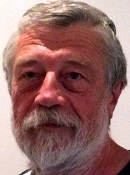
Vladimir Valentinovich Egorov
Professor
Russian Academy of Sciences, Russia
Speech Title: Quantum-Classical Mechanics: Principles, Applications, and Prospects
Abstract: In quantum mechanics, the theory of quantum transitions is grounded on the convergence of a series of time-dependent perturbation theory. In nuclear and atomic physics, this series converges because the dynamics of quantum transitions are absent by definition. In molecular and chemical physics, the dynamics of “quantum” transitions, being determined by the joint motion of a light electron (or electrons) and very heavy nuclei, are present by definition, and this series becomes singular. An exception is the dynamic problem for stationary states in the Born-Oppenheimer adiabatic approximation, when the electronic subsystem turns out to be “off” from the general dynamic process and therefore is not dynamically full-fledged: it only forms an electric potential in which the nuclei oscillate. Removing the aforementioned singularity can be accomplished in two ways. The first method was consisted of introducing an additional postulate in the form of the Franck-Condon principle into molecular quantum mechanics, in which the adiabatic approximation is used. The second method was proposed by the author and consisted of damping the singular dynamics of the joint motion of an electron and nuclei in the transient state of molecular “quantum” transitions by introducing chaos. This chaos arises only during molecular quantum transitions and is called dozy chaos. Dozy chaos leads to the continuity of the energy spectrum in the molecular transient state, which is a sign of classical mechanics. Meanwhile, the initial and final states of the molecule obey quantum mechanics in the adiabatic approximation. Molecular quantum mechanics, which takes into account the chaotic dynamics of the transient state of molecular “quantum” transitions, can be called quantum-classical mechanics (QCM). The efficacy of the damping for the aforementioned singularity is shown by different QCM applications, in particular, by applications of the so-called Egorov resonance to optical spectra in polymethine dyes and J-aggregates both for single-photon and two-photon processes, which, in particular, are rationalizing experimental studies in the field of bioimaging and photodynamic therapy. Prospects for further developments in QCM and their applications to problems of cancer and viral infections are discussed.
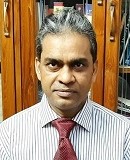
Mrinal Pal
Senior Principal Scientist
CSIR-Central Glass & Ceramic Research Institute, India
Speech Title: Multicolored emission from pristine ZnO nanostructure: A voyage towards single source white LED
Abstract: UV/NUV excitable RGB phosphors with precisely tuneable PL emission properties have been in high demand for their suitability in the fabrication of white LEDs. We have tried with success to generate for the first-time multiple emission having tuneable PL intensity, shade, and color temperature in pristine zinc oxide. The ZnO nanopowder was prepared by a facile and cost-effective aqueous solution-precipitation method. The as-synthesized nanopowder was annealed at different temperatures ranging from 150 oC to 850 oC and all these samples were characterized by XRD, FESEM, EDX, BET, Raman spectroscopy, and UV-Vis spectroscopy to have insight into their microstructural, compositional, and band-structure details. Optical studies of the samples were conducted using PL and s-PL spectroscopy. Color coordinates of the samples were obtained from the CIE plots derived from the PL spectra. The CIE coordinates were further used to calculate the CCT values of the samples and they are found to be suitable in cold light applications. These nanostructured zinc oxide particles being sufficiently large in size are extremely stable and expected to show photoluminescence for a longer period of time than nanorods and quantum dots. PL studies of the samples revealed that various emission is originating from crystalline point defects, viz. zinc interstitial (Zni), and oxygen interstitial (Oi). Annealing at different temperatures triggered changes in the defect concentrations leading to the corresponding changes in the intensity, shade, and color temperature of the blue phosphorescence.
